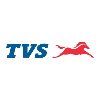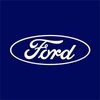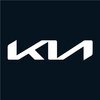
Tata Motors
Proud winner of ABECA 2025 - AmbitionBox Employee Choice Awards
Filter interviews by
Tata Motors Electrician Interview Questions and Answers
15 Interview questions
Working with diesel generators (DG) involves understanding their operation, maintenance, and safety protocols.
Understand the components: Familiarize yourself with parts like the engine, alternator, and control panel.
Fuel management: Ensure the DG has adequate diesel fuel and check for leaks regularly.
Regular maintenance: Schedule routine checks for oil levels, coolant, and battery condition.
Load testing: Perform l...
Electric fault refers to any abnormal condition in an electrical circuit that can cause malfunction or hazards.
Types of electric faults include short circuits, open circuits, and ground faults.
A short circuit occurs when current flows along an unintended path, often causing overheating.
An open circuit happens when a break in the circuit prevents current flow, leading to device failure.
Ground faults occur when curr...
Short-circuits occur due to a low-resistance connection between two conductors.
Short-circuits can be caused by damaged insulation, faulty wiring, or equipment failure.
They can result in excessive current flow, overheating, and potential fire hazards.
Short-circuits can be detected using circuit breakers or fuses that interrupt the flow of electricity.
Examples of short-circuits include a frayed power cord, a loose c...
The question is asking about the experience of working in a company.
Discuss your previous experience working in a company as an electrician.
Highlight any specific projects or tasks you have completed in a company setting.
Mention any challenges you faced and how you overcame them.
Talk about your ability to work as part of a team and collaborate with colleagues.
Emphasize your commitment to safety and following compa...
To connect HV battery to electric bus, follow safety protocols, identify positive and negative terminals, use appropriate cables and connectors, and ensure proper insulation.
Ensure safety protocols are followed to prevent electric shock or short circuits
Identify positive and negative terminals on both the HV battery and electric bus
Use appropriate cables and connectors rated for high voltage
Ensure proper insulatio...
The can resistance of an electric bus varies depending on the specific model and components used.
The can resistance of an electric bus can range from 0.1 ohms to 1 ohm.
Factors such as the size of the bus, the type of batteries used, and the efficiency of the electric motors can all affect the can resistance.
For example, a smaller electric bus with high-performance batteries and motors may have a lower can resistan...
Building Management System
BMS stands for Building Management System
It is a computer-based control system installed in buildings to monitor and manage equipment such as HVAC, lighting, security, and more
BMS helps in optimizing energy usage, improving comfort levels, and enhancing overall building efficiency
A diode is a semiconductor device that allows current to flow in one direction only.
Diods are commonly used in electronic circuits to control the direction of current flow.
They have two terminals - an anode and a cathode.
When forward biased, a diode allows current to flow. When reverse biased, it blocks current.
Examples of diodes include light-emitting diodes (LEDs) and rectifier diodes.
A motor is a device that converts electrical energy into mechanical energy to produce motion.
Converts electrical energy into mechanical energy
Used to produce motion in machines or equipment
Commonly found in appliances, vehicles, and industrial machinery
A transformer is an electrical device that transfers electrical energy between two or more circuits through electromagnetic induction.
Transformers are used to increase or decrease voltage levels in electrical circuits.
They consist of two coils of wire, known as the primary and secondary coils.
The primary coil is connected to the input voltage source, while the secondary coil is connected to the output load.
Transfo...
Tata Motors Electrician Interview Experiences
10 interviews found
I applied via Job Fair
(1 Question)
- Q1. Electrician troubleshooting
I applied via Naukri.com and was interviewed in Nov 2023. There were 2 interview rounds.

(3 Questions)
- Q1. Why are the short-circuit
- Ans.
Short-circuits occur due to a low-resistance connection between two conductors.
Short-circuits can be caused by damaged insulation, faulty wiring, or equipment failure.
They can result in excessive current flow, overheating, and potential fire hazards.
Short-circuits can be detected using circuit breakers or fuses that interrupt the flow of electricity.
Examples of short-circuits include a frayed power cord, a loose connec...
- Q2. I wire cutting and wire losse than earth circuit is called short-circuit
- Q3. Arround in compney
- Ans.
The question is asking about the experience of working in a company.
Discuss your previous experience working in a company as an electrician.
Highlight any specific projects or tasks you have completed in a company setting.
Mention any challenges you faced and how you overcame them.
Talk about your ability to work as part of a team and collaborate with colleagues.
Emphasize your commitment to safety and following company po...
I applied via Company Website and was interviewed in Sep 2023. There were 2 interview rounds.

(3 Questions)
- Q1. What is the can resistance of an electric bus 🚍 .
- Ans.
The can resistance of an electric bus varies depending on the specific model and components used.
The can resistance of an electric bus can range from 0.1 ohms to 1 ohm.
Factors such as the size of the bus, the type of batteries used, and the efficiency of the electric motors can all affect the can resistance.
For example, a smaller electric bus with high-performance batteries and motors may have a lower can resistance co...
- Q2. What is the full form BMS
- Ans.
Building Management System
BMS stands for Building Management System
It is a computer-based control system installed in buildings to monitor and manage equipment such as HVAC, lighting, security, and more
BMS helps in optimizing energy usage, improving comfort levels, and enhancing overall building efficiency
- Q3. How to connect HV battery to electric bus
- Ans.
To connect HV battery to electric bus, follow safety protocols, identify positive and negative terminals, use appropriate cables and connectors, and ensure proper insulation.
Ensure safety protocols are followed to prevent electric shock or short circuits
Identify positive and negative terminals on both the HV battery and electric bus
Use appropriate cables and connectors rated for high voltage
Ensure proper insulation to ...
Interview Preparation Tips
It is one of the best companies in India 🇮🇳
I applied via Company Website and was interviewed in Aug 2023. There were 2 interview rounds.

(2 Questions)
- Q1. Basic knowledge of 3 phase induction motor
- Q2. Basic knowledge of electronic equipment
Interview Preparation Tips
- 3 phase induction motor
- Basic knowledge of electronics e
I applied via Campus Placement and was interviewed in Apr 2023. There were 2 interview rounds.

(4 Questions)
- Q1. Difine series connection
- Ans.
A series connection is a type of electrical circuit where components are connected end-to-end, allowing current to flow through each component sequentially.
In a series circuit, the same current flows through all components.
If one component fails, the entire circuit is interrupted (e.g., a string of holiday lights).
The total voltage in a series circuit is the sum of the voltages across each component.
Example: Batteries ...
- Q2. Difine parallel conection
- Ans.
A parallel connection allows multiple electrical devices to operate independently on the same voltage source.
In a parallel circuit, each device is connected directly to the voltage source.
If one device fails, others continue to operate (e.g., lights in a room).
Voltage across each device remains the same, while current can vary.
Commonly used in household wiring for lights and outlets.
- Q3. What is current
- Ans.
Current is the flow of electric charge in a circuit.
Current is measured in amperes (A).
It is caused by the movement of electrons or other charged particles.
Current can flow in both directions in an alternating current (AC) circuit.
In a direct current (DC) circuit, current flows in only one direction.
The magnitude of current is determined by the voltage and resistance in the circuit.
Ohm's Law states that current is equa...
- Q4. What is DC current
- Ans.
DC current stands for Direct Current, which is the flow of electric charge in a single direction.
DC current is characterized by a constant and steady flow of electrons in one direction.
It is commonly produced by batteries, solar cells, and power supplies.
Unlike AC (Alternating Current), DC current does not change its direction periodically.
DC current is used in various applications such as powering electronic devices, ...
I applied via Naukri.com and was interviewed in Aug 2023. There were 2 interview rounds.

(4 Questions)
- Q1. What is the realy
- Q2. What is the transformer
- Ans.
A transformer is an electrical device that transfers electrical energy between two or more circuits through electromagnetic induction.
Transformers are used to increase or decrease voltage levels in electrical circuits.
They consist of two coils of wire, known as the primary and secondary coils.
The primary coil is connected to the input voltage source, while the secondary coil is connected to the output load.
Transformers...
- Q3. What is the motor
- Ans.
A motor is a device that converts electrical energy into mechanical energy to produce motion.
Converts electrical energy into mechanical energy
Used to produce motion in machines or equipment
Commonly found in appliances, vehicles, and industrial machinery
- Q4. What is the diod
- Ans.
A diode is a semiconductor device that allows current to flow in one direction only.
Diods are commonly used in electronic circuits to control the direction of current flow.
They have two terminals - an anode and a cathode.
When forward biased, a diode allows current to flow. When reverse biased, it blocks current.
Examples of diodes include light-emitting diodes (LEDs) and rectifier diodes.
Interview Preparation Tips
- Diploma
Skills evaluated in this interview

(3 Questions)
- Q1. Of automobails releted
- Ans.
Doing work break pipi in tata magic ambulance
- Q2. Trim line related question
- Ans.
Head lamp fitment and teldor lamp fitment
- Q3. Trin line related question
- Ans.
R h and l h beding fitment and tata magic express beding l h and r h and tel dor beding fitment
Interview Preparation Tips
I appeared for an interview before Mar 2024, where I was asked the following questions.
- Q1. How to work Dg
- Ans.
Working with diesel generators (DG) involves understanding their operation, maintenance, and safety protocols.
Understand the components: Familiarize yourself with parts like the engine, alternator, and control panel.
Fuel management: Ensure the DG has adequate diesel fuel and check for leaks regularly.
Regular maintenance: Schedule routine checks for oil levels, coolant, and battery condition.
Load testing: Perform load t...
- Q2. What is the electric of fault
- Ans.
Electric fault refers to any abnormal condition in an electrical circuit that can cause malfunction or hazards.
Types of electric faults include short circuits, open circuits, and ground faults.
A short circuit occurs when current flows along an unintended path, often causing overheating.
An open circuit happens when a break in the circuit prevents current flow, leading to device failure.
Ground faults occur when current l...
I applied via Company Website and was interviewed in Mar 2022. There were 2 interview rounds.

Reasoning
Interview Preparation Tips
- Reasoning
I applied via Campus Placement and was interviewed before Sep 2021. There were 3 interview rounds.

Normal as u can solve your aptitude test
(2 Questions)
- Q1. Why you are want to join Tata motors.
- Q2. What is the primary tools for an electrician.
- Ans.
The primary tools for an electrician include pliers, wire strippers, screwdrivers, voltage testers, and power drills.
Pliers are used to grip and twist wires and other components.
Wire strippers are used to remove insulation from wires.
Screwdrivers are used to tighten or loosen screws.
Voltage testers are used to check if a circuit is live or not.
Power drills are used to drill holes and drive screws.
Interview Preparation Tips
Be sincere for any discussion.
Top trending discussions






Tata Motors Interview FAQs
The duration of Tata Motors Electrician interview process can vary, but typically it takes about less than 2 weeks to complete.
Tell us how to improve this page.
Tata Motors Interviews By Designations
- Tata Motors Senior Manager Interview Questions
- Tata Motors Graduate Engineer Trainee (Get) Interview Questions
- Tata Motors Mechanical Engineer Interview Questions
- Tata Motors Quality Engineer Interview Questions
- Tata Motors Design Engineer Interview Questions
- Tata Motors Territory Sales Manager Interview Questions
- Tata Motors Sales Executive Interview Questions
- Tata Motors ITI Fitter Interview Questions
- Show more
Interview Questions for Popular Designations
Overall Interview Experience Rating
based on 14 interview experiences
Difficulty level
Duration
Interview Questions from Similar Companies
Tata Motors Electrician Reviews and Ratings
based on 81 reviews
Rating in categories
|
Senior Manager
6.7k
salaries
| ₹12.6 L/yr - ₹22.9 L/yr |
|
Deputy General Manager
891
salaries
| ₹25.4 L/yr - ₹45.1 L/yr |
|
Executive
833
salaries
| ₹3.9 L/yr - ₹11.3 L/yr |
|
Quality Engineer
434
salaries
| ₹1.5 L/yr - ₹4.3 L/yr |
|
Sales Executive
386
salaries
| ₹1.5 L/yr - ₹4.8 L/yr |

Maruti Suzuki

Mahindra & Mahindra

Mercedes-Benz Research and Development India

TVS Motor
- Home >
- Interviews >
- Tata Motors Interview Questions















